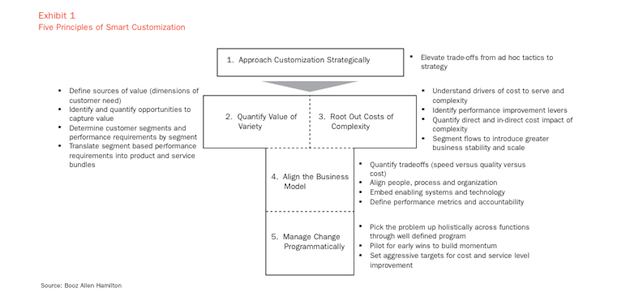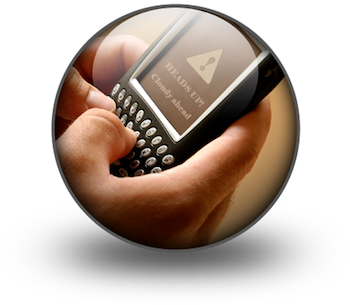The Onion’s sarcasm continually strikes the current-events funny bone, and their recent parody of cloud marketing is no exception. But once we stop savoring the hilarious one-liners (“We have all the G’s!”), reality sets in: many companies do not understand the positives and negatives of transitioning portions of their previously-embedded user experience to the cloud.
Some companies—especially those in the automotive industry—are driving off the cliff because that’s what all of the other lemmings are doing, but they should pause to understand the implications to the consumer and the corporation before going that route.
So how do we part the haze to understand the effects of the cloud on user experience in automobiles instead of being blind followers? As with any difficult decision, analyzing the pros and cons helps to weigh each side. So let’s proceed down that foggy path together, and then discuss how to arrive at the right decision.
Advantages of the Cloud
- Computing Power: Putting enough “horsepower” into an embedded unit to drive computational-intensive actions (like, say, regional natural-language speech processing for all global dialects) is impractical. Putting all of that power in a centralized server allows for the efficiency of staggered use of shared resources (when the U.S. is sleeping, Asia is banging against the server), the nimbleness to scale up/down easily (adding another server in series is easier than upgrading millions of handheld units), and the safety of backing-up hardware in case the primary system goes down (a backup server allows for secondary support).
- Agility: You want to add a new service tomorrow? Having the user data offboard allows the corporation to see where the market is headed and react. It also allows for testing that new service quickly where usage demonstrates an interest. For example, your data says West Coast customers are frequently searching for nearby fast food between 4:30 and 7:15pm, so testing a beta of heuristic-based coupons at ignition-on for market acceptance allows the corporation to move on quickly if user satisfaction is low.
- Embedded Memory: Installing a mobile device with offboard computing and data storage means you need minimal onboard memory. For example, localized maps might be stored, but the global map need not be stored onboard when 99% of it will never be required.
- Quality: If customers are having trouble with speech recognition or route following, offboard visibility allows engineers to tweak algorithms. Some systems even collect customer speech and touch patterns to understand regional dialects or variances in swipes and gestures so the experience may be improved in the future. Not to mention, the reference data sold with the mobile device (points of interest, vocabulary, traffic patterns) becomes outdated the day it’s sold. The server can continually upgrade its database’s quality.
- UX Tailoring: A distributed system allows the user experience engineer to determine what elements are used infrequently and eliminate unwanted screen clutter. Knowing what to delete and accentuate has traditionally been a marketing exercise rather than a usability one, but with distributed systems that data has become readily available—so why not use it to improve your product?
Disadvantages of the Cloud
- Disruption: When the embedded system cannot access the server because mobile cellular is unavailable or an Internet connection is down, experience suffers. The UX engineer can, at times, provide minimal onboard backups, but the backup experience is rarely as good.
- Security: Interestingly, there are two unique security issues: the over-the-air or over-the-wire security that can typically be solved by a form of encryption, and the more difficult issue of throughout-the-corporation security, which requires stringent procedures and ongoing audits. For instance, several million vehicles presently have the ability to remotely receive a 30-60 second audio clip that may be immediately played to customers. For the sake of security, encryption must be in place to prevent outside hackers from sending false reports (“Aerial attack! Pull off the highway!!”), and internal security procedures must be set up to prevent internal errors. The more you beef-up both securities, the more costs and less agility your organization will have—though less security can cost more in the long run.
- Speed: Once the processing of data has been moved to the cloud, the input/output (I/O) cycle between the user and the interface is almost always slower. Yes, wireless speeds have increased greatly, even in the past few years, but the lag is still palpable. 4G cannot compare to hardwired.
- Backwards Compatibility: As your company produces its fourth generation hardware with new inputs (like gesture sensing and eye-tracking), it will want to produce new services that maximize those modalities. The legacy customers, though, expect ongoing service improvements, and you must create application protocol interfaces (APIs) for all generations of hardware in the field. To make sure everything is working, all new services must be tested with the various levels of hardware to make sure no serious glitches exist, especially if they are safety-related.
- Cost: Although there might be a savings through lesser processor and memory requirements within the embedded hardware, the over-the-air packet costs (for telematics services), the hosting costs (for nearly all cloud-based services) and other operational costs (testing) add up. As many online sources have outlined: understand the business case of customization before assuming the value will outweigh the cost.
The Bridge May Be Foggy
No matter what, there appear to be three points that are forcing automotive original equipment manufacturers (OEMs) to drive into the fog with great trepidation:
- Consumer Electronics: J.D. Power’s IQS scores for cockpit electronics continue to be the thorn in the sides of original equipment manufacturers (OEMs). “Hands-free communication does not recognize command” is the second most frequent 2011 complaint. This is due, in part, to customer expectations with rapidly evolving consumer electronics. To keep up, the OEMs feel significant pressure to create an integration bridge to the consumer electronics (CE) cloud.
- Driver Inattention: Yes, yes … the media’s term for this is “Driver Distraction,” but that inappropriately alleviates the driver of responsibility. Regardless of culpability, the National Highway and Traffic Safety Administration (NHTSA) has issued fair warning that creating that unfiltered bridge to the CE cloud will come under significant scrutiny.
- Paying For The Pipeline: Consumers are already paying a monthly fee for cellular and data charges to the CE cloud for mobile phones. They want to use their current connectivity and associated features, but they also want in-vehicle integration like emergency services. These have traditionally been mutually exclusive: like OnStar providing embedded safety features and SYNC used for CE non-safety integration.
Some, like Hyundai, have permitted replication of a cellphone’s user experience and others, like BMW, have announced the provision of a software kit for third party developers with “…the prerequisite for all apps [to] meet the requirements for distraction-free operation.” Time will tell whether these strategies can walk the fine lines of customer and societal expectations.
Parting the Haze
The bad news: There is no single, obvious answer to all of these questions. The politics, the service quality, and the risks involved make the road ahead very cloudy.
The good news is that the best UX practitioners know how to navigate the mist: prototype systems, try them out with users, and measure the reaction. There is no substitute for data concerning user satisfaction and their willingness to pay for services. In the long run, you still might want to follow the other lemmings and dive deep into that cloud, but you should at least understand the implications upfront so you can maximize your user experience and profits!
Image of car crossing foggy bridge courtesy Shutterstock.










